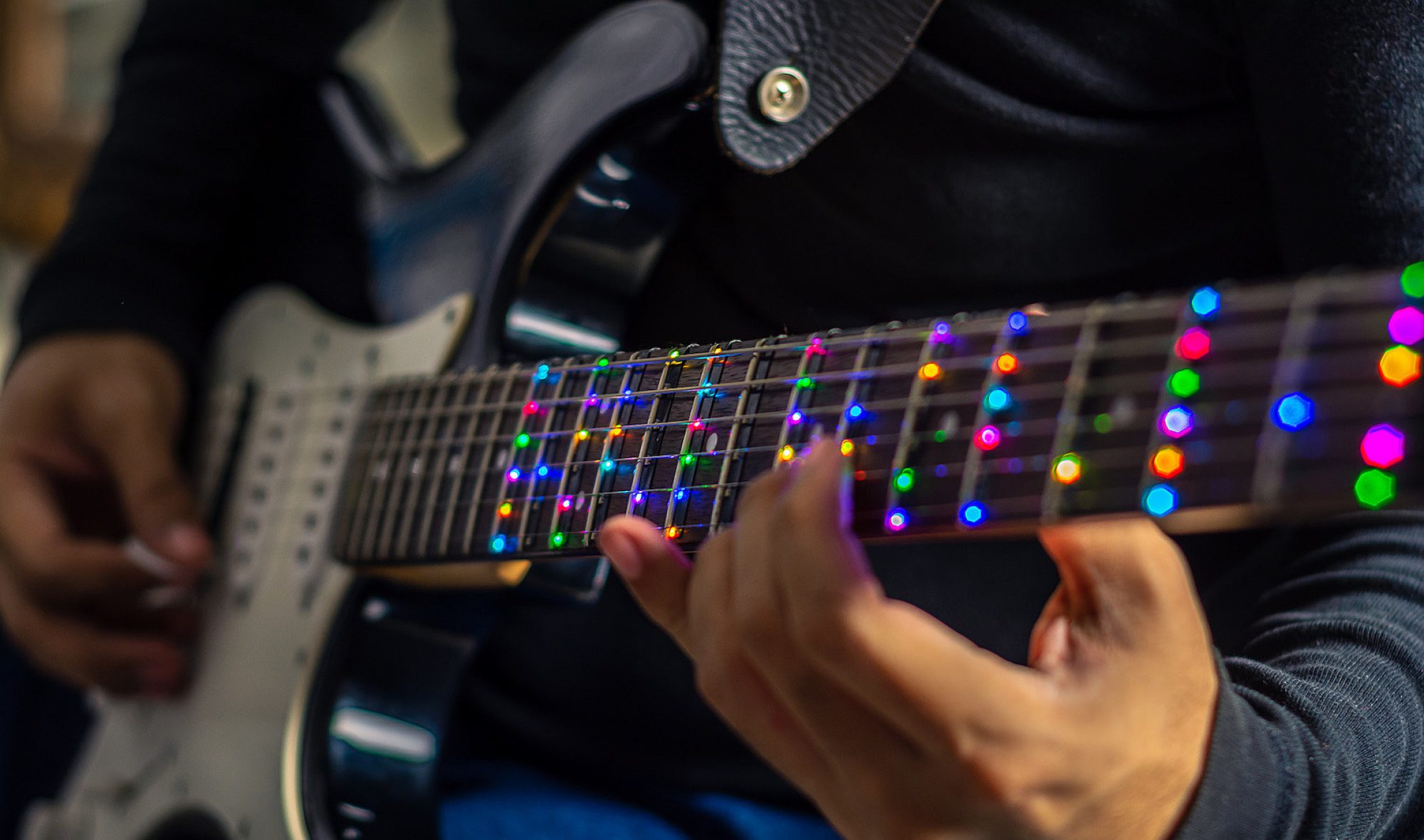This week, I worked on 2 main tasks:
- Integrating the embedded system with Ashwin’s RPi and web app. We uncovered a few quirks of the User Interface.
- Helped Owen integrate the final fretboard PCBs onto the real guitar
I worked with Ashwin and Owen to integrate the embedded electronics as the “glue” between the web app and the electronics. I worked with Ashwin to flesh out how the restart, start, and pause signals would work, and it worked with the Pi and Teeny. We also uncovered an issue with the MIDI library Ashwin was using to parse the MIDI file, creating different outputs than my existing MIDI parsing code on the embedded side was expecting. After realizing the Teensy doesn’t care about the MIDI file, it just the locations and timing of notes on the fretboard, we transitioned from having the Pi send a MIDI file to instead sending a list of times and (fret, string) coordinates of where along the fretboard a note should be played. This also eliminated the need for the Teensy to run Ashwin’s note-to-fretboard coordinate algorithm on the Teensy. This change has been implemented, and the RPi can successfully send the coordinate and timing information over UART to the Teensy. This works from start to end: a user can upload a MIDI file to the web app, and the RPi can convert that to a list of coordinates, which the Teensy can successfully receive and parse. Overall, this change resulted in significant simplification of the embedded code. Furthermore, I refactored the embedded code to be in different files to organize it and make it easier to change and edit.
I also removed the assertion that would fail when the user was done with a song in Training mode, becuase it was unnecessary. Now, the system correctly loops back to the beginning WAIT_FOR_START state once the user experience is done (at least in training mode).
I made the color of LEDs on the fretboards light up with the same color as the notes on the web app:
I started the week by transitioning from having the Teensy4.1 on the breadboard to being on the PiHat PCB and controlling the LEDs and Flip Flops using the PiHat.
Later in the week, I worked with Owen to integrate the final fretboard PCBs on the guitar. I helped Owen carve channels in the guitar’s fretboard to keep the fretboard PCBs recessed:
I also soldered some wires between the PCBs to connect them together:
Now, we can take a MIDI file from the internet, upload it to the web app, and have the Teensy conduct the User Experience in Training mode on the actual guitar with the final fretboard PCBs!
